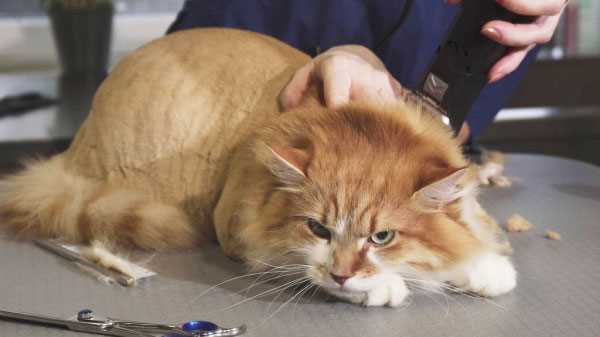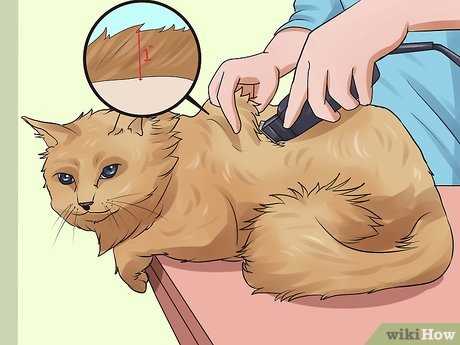

Before anything else, investing in high-quality grooming tools is a game changer. A sharp pair of clippers designed for pets will make the process smoother and safer. Look for options with adjustable blades to customize the length of fur you want to leave behind. It’s essential to keep your tools clean and well-maintained for optimal performance.
Establish a calm environment to reduce any stress. Choose a quiet space free from distractions, where your furry friend feels comfortable. Using treats and gentle praise can help create a positive association with the grooming session. Patience is key, as trust takes time to build, especially with a more timid companion.
Before beginning, make sure to detangle any knots or mats. This makes the clipping process much easier and prevents discomfort. Use a slicker brush or a comb to carefully work through any tangles, starting from the tips of the fur and gradually moving towards the skin. Take breaks if your buddy shows signs of frustration.
When it’s time to begin, start with small sections. Glide the clippers in the direction of the fur growth for a smoother finish. Avoid rushing through the process; it’s better to take your time and ensure safety than to hurry and risk accidents. If your friend becomes agitated, pause and offer a break.
After the grooming session, a good bath can keep the coat looking fresh and healthy. Use a gentle shampoo formulated for pets, and be sure to rinse thoroughly. Drying your buddy completely is crucial, as moisture can lead to skin issues. A warm towel or a low-heat pet dryer can help with this.
Grooming Techniques for a Furry Companion
Before tackling any grooming session, gather the necessary tools: clippers with a guard, combs, and treats for positive reinforcement. Choose a quiet space free from distractions; this helps keep me calm. Start with a thorough brushing to remove tangles and loose fur. This step minimizes stress during the trimming process.
When using clippers, ensure they are quiet and suitable for sensitive fur. Test on a small patch first to gauge my reaction. Glide the clippers in the direction of the fur growth, taking short breaks if I seem anxious. Always maintain a steady hand to avoid any accidental nicks.
After trimming, inspect for any missed spots or uneven areas. A gentle combing session can help find these. Finish with a relaxing petting session and offer a treat as a reward for my patience. Regular maintenance makes future grooming easier and more pleasant.
Choosing the Right Tools for Cat Shaving
Start with a quality pair of clippers specifically designed for furry friends. Look for cordless options, as they offer convenience and flexibility. A blade size of #10 is commonly recommended for a close cut, while larger sizes like #7 or #5 are ideal for a longer finish.
Next, invest in a good pair of scissors with rounded tips. These are perfect for trimming around sensitive areas without risking injury. Make sure they are sharp to ensure a clean cut.
A grooming brush is equally important. A slicker brush works wonders for removing tangles and loose fur before using the clippers. This will make the entire process smoother and reduces stress for both of us.
Don’t forget about a high-quality comb. A wide-toothed comb is great for detangling, while a finer comb can help smooth out the coat after clipping.
Lastly, prepare a calming environment. A non-slip mat can keep your furry friend secure during the grooming session. Having treats on hand can also reward good behavior and help create a positive experience.
Preparing Your Cat for the Shaving Process

Before getting started, ensure your feline is calm and comfortable. A tranquil environment reduces stress. Create a cozy space away from loud noises and distractions. Play some soothing music or use calming pheromones to help ease your buddy into the experience.
Familiarization with Tools
Introduce the clippers and brushes gradually. Let your furry friend sniff and explore the equipment. This helps associate the tools with positive experiences. Use treats or gentle petting to reinforce this association, making the encounter less intimidating.
Brushing and Bathing

Prior to using any grooming tools, give your companion a thorough brush. This removes loose fur and prevents tangles, simplifying the process. If your pet is particularly dirty, a gentle bath can be beneficial. Ensure to dry them completely afterward; damp fur can complicate the shaving process.
For additional grooming solutions, check out a bundle of shedding solutions for dogs and cats. This resource provides various options to assist in the overall grooming experience.
Techniques for Safely Shaving Long Hair
Maintain calmness throughout the grooming session. A tranquil environment helps reduce stress for both of us.
Secure your companion in a comfortable position. Use a non-slip surface to prevent sliding. I prefer being on a table or a soft blanket.
Utilize clippers with adjustable length settings. Start with a longer guard to gauge comfort levels before moving to a shorter length.
Follow the natural direction of fur growth. This minimizes tugging and discomfort, ensuring a smoother experience.
Keep the clippers at a steady angle. Avoid pressing too hard against the skin to prevent nicks or irritation.
- Use short, gentle strokes to work through tangles.
- Take breaks as needed to avoid overheating the clippers.
- Regularly check for any signs of discomfort or agitation.
Be mindful of sensitive areas such as the belly and legs. Approach these sections with extra care to ensure safety.
After finishing, brush out any loose hairs to prevent matting. A quick clean-up keeps the area tidy and comfortable.
Reward your furry friend with treats and affection afterward. Positive reinforcement makes future grooming sessions easier.
Managing Your Cat’s Anxiety During Shaving
To help ease nerves during grooming, I suggest creating a calm environment. Start by playing soft music or using a white noise machine to mask any unsettling sounds. Ensure the room is well-lit yet comfortable.
Use treats as positive reinforcement. Offer a few before and after the grooming session. This builds a positive association. Additionally, practice short sessions with grooming tools without actually cutting fur. Familiarity reduces stress.
- Introduce the clippers slowly. Allow your feline friend to sniff and explore them.
- Set a routine to make the process predictable. Consistency helps reduce anxiety.
- Consider using a calming spray or pheromone diffuser prior to the session. These can create a soothing atmosphere.
Always monitor your companion’s body language. If they seem uncomfortable, take a break. Patience is key. If anxiety persists, consulting a veterinarian may be beneficial for additional strategies.
For a delightful distraction, consider exploring some yummy recipes, like how to cook marinated chicken breast in skillet. It’s a great way to enjoy some tasty treats together after a grooming session!
Post-Shave Care for Your Feline’s Skin and Coat
After the grooming session, it’s crucial to prioritize the well-being of your furry friend’s skin and fur. Start by gently cleaning the exposed areas with a damp cloth to remove any stray hairs or debris. This keeps the skin fresh and free from irritation.
Moisturizing
Apply a pet-safe moisturizer or conditioner to prevent dryness. Look for products specifically designed for animals, as human products may contain harmful ingredients. Focus on areas where the hair was trimmed short, ensuring that the skin remains hydrated.
Regular Check-ups
Monitor for any signs of redness, irritation, or discomfort. Schedule a visit to the vet if you notice anything unusual. Keeping an eye on skin health post-grooming can prevent potential issues from developing.
Lastly, maintain a regular brushing routine. This helps your companion’s coat regain its natural shine and prevents matting. Regular grooming fosters a healthy environment for the fur to grow back smoothly.
When to Seek Professional Grooming Help
If you notice significant matting in my fur that you can’t easily remove, it’s time to call in the experts. Mats can pull on my skin, causing discomfort and irritation. Professionals have the right tools and techniques to handle this without causing me stress.
Signs Indicating the Need for a Groomer
Here are specific situations where seeking professional assistance is advisable:
| Indicator | Action |
|---|---|
| Excessive mats or tangles | Contact a groomer for safe removal |
| Skin irritation or redness | Schedule a vet visit before grooming |
| Unmanageable anxiety during grooming | Consider professional handling |
| Signs of discomfort or pain | Seek immediate veterinary advice |
| Inexperience with grooming tools | Book a session with an experienced groomer |
Benefits of Professional Grooming
Groomers can provide a thorough cleaning and style that enhances my appearance and well-being. They also have access to specialized products that are safe for my skin, ensuring a healthier coat. Plus, their expertise means they can spot potential health issues early, making them an invaluable resource.








